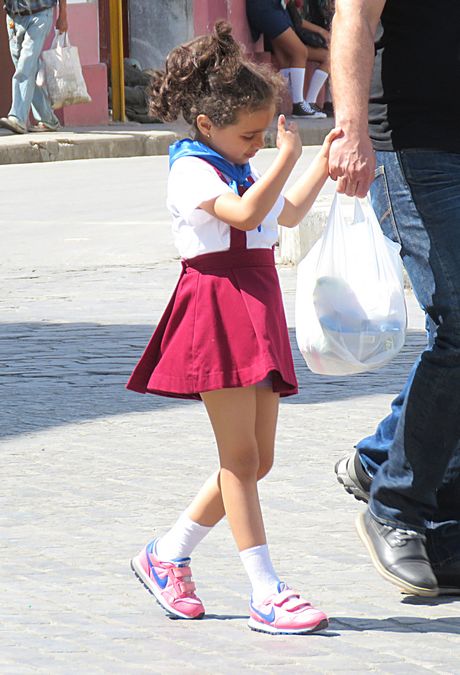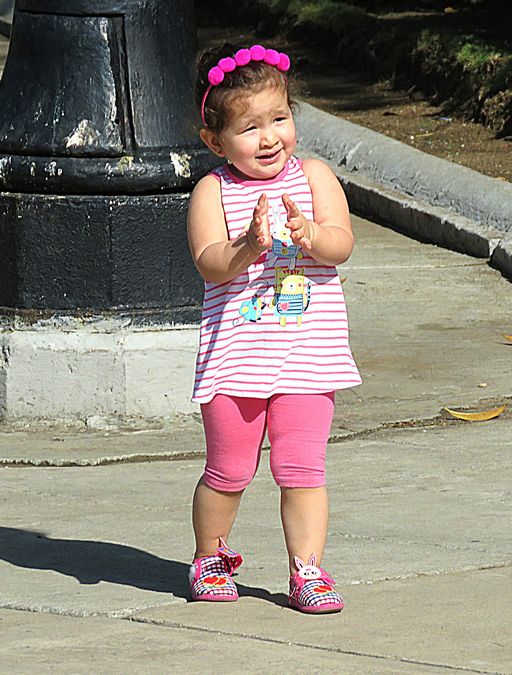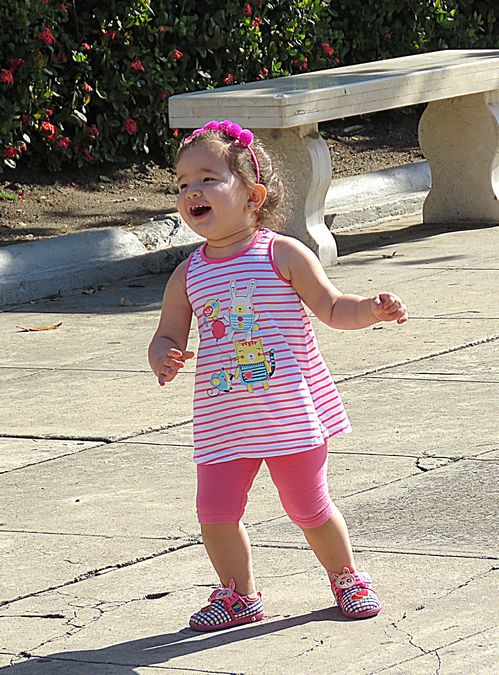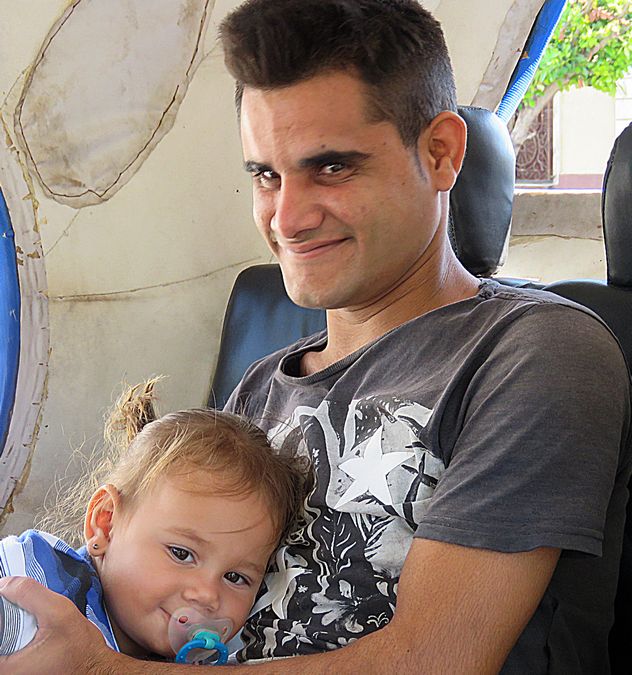Undiscovered Cuba - March 11 - March 22, 2018
I went on a Natural Habitat trip to Cuba.
Cuba has a population of about 11 million and consists of an archipelago formed
by one large island and several small ones. It is situated on the northern rim of the
Caribbean Sea, between the Atlantic Ocean and the Caribbean Sea. Its size is
slightly smaller than the state of Pennsylvania. It is about 90 miles from the Florida
Keys in the U.S. Just a bit over one-half of the island has flat or rolling terrain, with
the remainder being hilly or mountainous, with dense forest in many places.
Cuba was originally inhabited by indigenous groups whose ancestors migrated from
the mainland of North, Central, and South America and were farmers, fishermen,
and hunter-gatherers. Christopher Columbus landed there in 1492 and claimed
Cuba for Spain, which led to the elimination of the indigenous people due to
conquest and disease. The African slave trade began around 1523 and grew
with the development of coffee and sugar on the island. Colonial status under
Spain ended when the United States invaded during the Spanish-American War
of 1898 (called the War of Independence in Cuba). Cuba became a de facto colony
of the U.S. until 1901 when the U.S. agreed to withdraw militarily following Cuban
protests. The U.S. insisted on a 99 year lease to the naval base at Guantanamo in
southeastern Cuba and veto power over trade and military treaties and the right
to intervene in Cuba's internal affairs. The legislation specifying these
conditions was the Platt Amendment, which was drafted by the U.S. and
inserted word for word into the first Cuban constitution of 1902, which granted so-called
independence for Cuba. While there was economic development, political corruption
was commonplace.
Fulgencio Batista, an army sergeant, who was elected President
in 1940 after he organized a non-commissioned officer revolt in 1933, was voted
out of office in 1944 but seized power in a bloodless coup 3 months before another
presidential election was to occur in 1952. He allowed US corporations to build
various projects, and the U.S. Government supported the brutal Batista dictatorship,
enraging most Cubans. In 1953 Fidel Castro, led a small group of fighters in a
failed attack on July 26, which became the name of a national revolutionary
movement, the July 26 Movement. When Castro was released from jail, he
fled to Mexico with his brother Raul and met a young physician named Ernesto
"Che" Guevara and started planning another military attack, traveling to
the U.S. to raise money. On December 2, 1956, the 3, along with a small group
of Cuban exiles, landed near Santiago in a small ship named "Granma." Most
were captured, but the 3 leaders and others fled into the Sierra Maestra mountains
in eastern Cuba where many other Cubans joined them. Batista was ousted in January
1959, and communist Fidel Castro became Cuba's leader.
The U.S. imposed an embargo on Cuba in 1960 and cut off diplomatic relations in
January 1961, after the Cuban Government's expropriation of U.S. properties and its
move to a one-party communist system. Since 1965, Cuba has been a single party
state governed by the Communist Party. Castro's government has restricted
freedoms, and more than a million people have fled Cuba, most coming to the U.S..
Miami has the largest Cuban population outisde of Cuba. The fall of the Soviet Union
resulted in severe hardship to Cuba, due to loss of trading partners and the suspension of
economic relations between Cuba and former socialist bloc countries. Scarcities increased and
shortages of almost every kind became commonplace.
In 2006, Fidel Castro became ill and was replaced by his brother Raul in 2007. Raul
loosened some of the most restrictive laws against private ownership and private
business. Raul said he will step down later this month, April 2018.
Page One - Santa Clara and Cienfuegos

In Santa Clara, almost the center of the country.
There are not a lot of cars in Cuba, and almost all are from the 1950s.
Fidel Castro placed a ban on foreign vehicle imports, thus freezing in place
what was already there at the time. It also made it difficult to buy new parts and fuel for
the old-time American cars Cuba is known for. Since the old-time Cuban cars
are a tourist attraction for foreigners,
they are often used as taxis or put on display.
These cars always seemed to be freshly painted.
However, many cars not
being used to entertain the tourists are rundown and near collapse.

When Raúl Castro, Fidel's brother, took over, he abolished the need for permission
to purchase a foreign-made car. This was the first time the ban had been relaxed since
its implementation after the 1959 Cuban revolution. So now, Cuban consumers can
purchase more modern vehicles, but very few can afford them. Transportation is a
problem in Cuba. Hitchhiking and carpooling is a critical part of their
transportation "system."

Street scene in Santa Clara
There are two well-known figures associated with Santa Clara:
Marta Abreu de Estévez, a beloved native daughter known as "the Benefactress of
the City" and Ernesto Che Guevara for having waged there
the final battle of the revolution that toppled the Fulgencio Batista
government in 1958.

Bicycle taxis are common in the country.

Former City Hall, now Marti Library, at
Parque Vidal, hub of Santa Clara, social center of the city where locals hang out.
A theater, art gallery, and museum border the park. Following Spanish colonial
tradition, the city was laid out with a central plaza.

Teatro La Caridad (Caridad Theater)
It was built in 1885 during the Spanish Colonial era. The theater was financed
entirely by Marta Abreu de Estevez, the local philanthropist who
contributed to the prosperity of the city, donating resources to many projects.

School girl in her school uniform shading her eyes from the sun.
Before the 1959 Revolution, the literacy rate was about 80 %,
and was low in rural areas. Fidel Castro created a total state-operated system
and banned
private institutions.
School attendance is compulsory from
ages six to the end of basic secondary education (normally at age 15).
All students, regardless of age or gender, wear school uniforms with the color
denoting grade level.
Primary education lasts six years, secondary
education is divided into basic
and pre-university education. Cuba's literacy rate of 99.8
percent is the one of the highest globally,
due largely to the provision of free
education at every level. Cuba's high school graduation rate is 94 percent.
Higher education is provided by universities and higher institutes.
The Cuban Ministry of Higher Education operates a distance education program
that provides regular afternoon and evening courses in rural areas
for agricultural workers. Education has a strong political and ideological
emphasis, and students progressing to higher education
are expected to have a commitment to the goals of Cuba.
It is illegal in Cuba to criticize the Government.

Run down building in Santa Clara that is occupied. You see a lot of these in Cuba.
Deferred maintenance is a problem. In Havana, one to three buildings collapse
every day.

Street scene in Santa Clara. Note the 3-wheeled small truck.

Old cars and a bike taxi on a Santa Clara street

Che Guevara Monument and Mausoleum in Santa Clara
It houses the remains of the revolutionary Ernesto "Che" Guevara and twenty-nine
of his fellow combatants killed in 1967 during Guevara's attempt to spur an
armed uprising in Bolivia. The full area contains a bronze 22-foot statue of Guevara.
 |
|
Che Guevara was born in Argentina.
As a young medical student, he traveled throughout South America and was
radicalized by the poverty, hunger, and disease he saw. His desire to help overturn
what he saw as the capitalist exploitation of Latin America by the U.S. resulted in
his involvement in Guatemala's social reforms under President Arbenz, whose
eventual CIA-assisted overthrow at the behest of the United Fruit Company
reinforced his political ideology. When he met Raúl and Fidel Castro in Mexico City,
he joined their July 26 Movement and sailed to Cuba aboard the yacht Granma
with the intention of overthrowing the U.S.-backed Cuban dictator Fulgencio Batista.
He rose to prominence among the insurgents, was promoted to second-in-command
and played a key role in the two-year guerrilla campaign that deposed the Batista
regime.

Following the Cuban Revolution, Guevara performed a number of key roles in the
new government. These included reviewing the appeals and firing squads for those
convicted as war criminals during the revolutionary tribunals, starting agrarian land
reform as minister of industries, helping spearhead a successful nationwide literacy
campaign, serving as national bank president and as instructional director for
Cuba's armed forces, and traveling as a diplomat on behalf of Cuban socialism.
Such positions also allowed him to play a central role in training the militia forces
who repelled the Bay of Pigs Invasion and bringing the Soviet nuclear-armed ballistic
missiles to Cuba which precipitated the 1962 Cuban Missile Crisis. Guevara left Cuba
in 1965 to foment revolution abroad, unsuccessfully in the Congo and later in
Bolivia, where he was captured by CIA-assisted Bolivian forces and executed.

Guevara was buried with full military honors on October 17, 1997 after his remains
were discovered in Bolivia, exhumed, and returned to Cuba. At this site, there is a
museum dedicated to his life and an eternal flame lit by Fidel Castro in his
memory. Santa Clara was chosen as the location in remembrance of Guevara's troops
taking the city on December 31, 1958, during the Battle of Santa Clara. The result of
this final battle of the Cuban Revolution was Cuban dictator Fulgencio Batista fleeing
into exile in Portugal, taking with him a personal fortune of over 300 million, gotten
through graft and payoffs. Batista died of a heart attack in 1973.

We drove from Santa Clara in the government produced air-conditioned bus
to Cienfuegos. See examples in the photo.
View from the walkway in front of my hotel room at Hotel Jagua in Cienfuegos.
The city is on the southern coast of Cuba on the Caribbean Sea, 160 miles from
Havana. It is Cuba's leading sugar exporting port. The area was settled by
indigenous people who built a fortress in 1745 to protect the bay from pirates.
French emigrants from Louisiana settled here in 1819 and officially founded
the city. French influence is notable in the architecture. The photo shows
Palacio de Valle (Valle Palace) – built 1913–1917 for a wealthy merchant born in
Spain who moved to Cuba.
Valle Palace is about 2 miles south of the center of Cienfuegos near La Punta, a
pretty peninsula extending into Jagua Bay.

Another view from my room of the city of Cienfuegos

At the Museo Historico Provincial, a regional museum inside an opulent former
Spanish casino, we attended a performance by the internationally acclaimed
choral group Cantores de Cienfuegos. The conductor told us that they had
performed in Missoula, Montana a few years ago. Later, our main guide let us
know that many in the group had defected then. Many Cubans would like to
leave the country, because most of the production is owned and run by the
Government, the Government sets the salaries for these occupations, and
there is not much difference in salary level between the various occupations.
It is difficult to gain wealth and many struggle to meet all needs.

Young child playing in the Cienfuegos main plaza.


Statue of Jose Marti, Cuban national hero in Parque Marti, the central square.
Through his writings and political activity, he became a symbol of Cuba's bid for
independence against Spain in the 19th century. He is referred to as the "Apostle of
Cuban Independence."

Tomas Terry Theater
Sharing French and Italian influences, this theater on the northern side of Parque
José Martí, was built between 1887 and 1889 to honor Venezuelan industrialist Tomás
Terry. The auditorium is decorated with marble, hand-carved
Cuban hardwoods, and ceiling frescoes. In 1895 the theater opened with a
performance of Verdi's Aida. It has witnessed numerous landmarks in Cuban
music, as well as performances by the likes of Enrico Caruso.


Building with 19th century Spanish colonial architecture,
once the home of a wealthy person in that era.

Bicycle taxi driver with his child. I asked to take this picture, then
showed them the photo.

Street scene Cienfuegos. Elderly woman crossing the street.
The 1959 Revolution brought universal health care. There are persistent
shortages of medical supplies but plenty of medical personnel. Infant mortality
rates compare favorably to developed countries. Disease and infant mortality
increased in the 1960s after the revolution when 1/2 of Cuba's doctors left
the country, but recovery occurred by the 1980s. Like the rest of the Cuban
economy, medical care suffered from severe material shortages after the end
of Soviet subsidies in 1991, and the tightening of the U.S. embargo in 1992.
Current challenges include low salaries for doctors, frequent
shortages of essential drugs, poor facilities. Cuba has the highest doctor
to population ratio in the world. It has sent 1000s of doctors to more than 60
countries and is known for sending good doctors and nurses to help
other countries in need. Cuban doctors helped combat the Ebola
virus epidemic in West Africa.

Horse car in Cienfuegos. We saw horse carts throughout the countryside.

Cienfuegos baseball stadium, home of the Cienfuegos Elephants. Baseball is Cuba's
favorite national sport. We met with a retired local baseball pro. The bus we rode
in on our trip is on the left.

Statue of an elephant outside the stadium. The baseball
team's mascot. Don't think I would want to see one
running the bases.
Link to Page Two - Botanical Garden/Valley of the Sugar Mills
Pat's Home Page